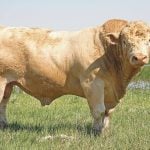Have you kept our secret? You know, our secret about building wealth over time in the stock market. The secret that it’s about buying common shares in solid companies, and holding them for a long time. The longer we can keep this secret the more time we will have to build our portfolios, before others catch on.
But how do we start building a portfolio of stocks? Like any construction project, we need the right building blocks. We want to build a resilient portfolio that will hold together in tough times and power forward in good times. We would like a portfolio that doesn’t need constant attention. After all we have our real job, our families and our farms to take care of. We don’t want to spend an onerous amount of time at this. We just want something straightforward and easy to do. How do we go about it?
Read Also

Gentle treatments for pain in the neck
Heading toward year-end, people unknowingly tense up against the cold and busyness, causing neck pain that can often be treated with appropriate support and gentle mobility, athletic therapist Kathlyn Hossack says.
The approach I take is similar to constructing a strong building. It starts with a solid foundation, then the best materials for the walls and the roof. After we have all the basics taken care of we can add a few options and decorations, to make the building more attractive and interesting, but the basics come first.
It doesn’t take a lot of money to start. I started my kids investing in stocks in 2010 at the ages of 13 and 16, with the princely sums of $1,953 and $4,933. Most of these funds were earned refereeing hockey and lacrosse. This was a great way to learn responsibility. City kids don’t grow up with as much opportunity for early responsibility as farm kids, and refereeing provided this opportunity, with a nice paycheck as a bonus. When they turned 18, the stocks were transferred as quickly as possible into their own Tax-Free Savings Accounts.
The best way for any new investor to invest smaller amounts with an eye to building significant portfolios over time is with the larger, highest quality companies. One of the most important things when starting out is to gain confidence and knowledge. When someone starts with high-risk stocks and loses, they often give up on the market altogether, and therefore give up the market’s great wealth creation abilities. It is best to start with stocks that have a high probability of success, and watch the dividends roll in. With success comes confidence and the potential to add more adventure — the options and decorations — at a later date.
How should these smaller portfolios be structured? I will make the following suggestions for small portfolios. These suggestions could be applicable for TFSA, RRSP, or a taxable account. As portfolios get larger, I suggest managing them differently in light of differing tax considerations, but to start there is less need for these nuances. (I own shares in all the companies noted and may also have options on them.)
Portfolios from $2,000 to $5,000
For portfolios in the $2,000 to $5,000 range, I recommend:
Canadian Bank: 40 per cent of portfolio. TD, RY and BNS have been my long-term favorites. The large Canadian banks have been very reliable performers, with good dividends.
Telecom: 30 per cent of portfolio. The big three in Canada are BCE, RCI.B (Rogers) and T (TELUS). I own all three in different portfolios.
Electric Utility: 30 per cent of portfolio. My two favourite in Canada are ACO.X (Atco) and FTS (Fortis).
Portfolios from $5,000 to $15,000
For portfolios from $5,000 to $15,000: Add in pipeline, transportation and insurance stocks.
Canadian Bank: 25 per cent.
Telecom: 15 per cent.
Electric Utility: 15 per cent.
Pipeline: 15 per cent of portfolio. The biggest are ENB (Enbridge) and TRP (TransCanada).
Transportation: 15 per cent of portfolio. Canada has two big railroads, CNR and CP. I own CNR and not CP. There’s not much to split the difference.
Insurance Company: 15 per cent of portfolio. The big three in Canada are SLF (Sun Life), MFC (Manu Life) and POW (Power Corp). Again I own all three in different portfolios.
In each case simply pick one company from the selection.
Diversification
In my future instalments I will build in more diversification, including international companies, for larger portfolios. I can’t emphasize enough the ability to start small, building over time.
The annual percentage gains of our youngest son’s portfolio have been: 10.1, 7.1, 5.2, 8.7, 18.5, 11.1, 18.2 and 11.3. Today at 21, his TFSA is $30,000, almost double the invested capital.
We paid for the essential parts of his education, so has been able to save a lot of his summer earnings. Our eldest, at 24, has a TFSA worth $70,000.
Here’s another secret: Shh! Investing in stocks is not a rich person’s game, and if done correctly will help anyone build financial security. It’s a good time to start as many of the companies listed can be purchased below previous valuations. I like 20 per cent off sales!
















